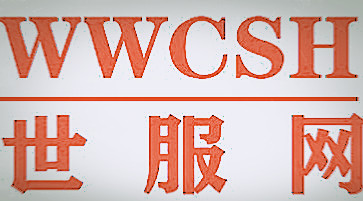In The Absence Of A Factory, The Textile Boss Smashed Up 200 Million Dollars! Business Opportunities
"The market here is like China thirty or forty years ago, and there are more business opportunities."
In Africa, "80 after" textile boss said so.
Now, more and more textile people are going to Africa. Under the "belt and road", at present, besides Southeast Asia, African countries such as Nigeria, Egypt, Ethiopia and Kenya become the new investment areas for Chinese textile enterprises to "go out".
African factories hit $200 million
In recent years, a large number of domestic textile and garment giants have gone to Africa to investigate, research, invest and build factories. This Zhejiang textile enterprise is also one of them.
Antai group from Zhejiang, China, has planned to invest in Ethiopia since the second half of 2018.
The plan is divided into three phases, with a total investment of $200 million.

Photo source: Xinhua News Agency
In the Adama (Adama) city, 80 kilometers southeast of Ethiopia's Addis Ababa, Antai Essex branch has established a complete production capacity supporting production base from fabric production to garment processing. It has become the first foreign enterprise in Addisababa Industrial Park to achieve export earnings.
At present, the area of Antai Essex branch is 140 thousand square meters, of which the factory covers an area of over 80 thousand square meters and employs 15000 people.

Partial photographs of Adama Industrial Park
Advantages in non investment
Africa is the second largest continent in the world. Its GDP ranks fourth among the six continents in the world. It is rich in cotton and oil resources and has great potential for economic development.
Africa has cheap manufacturing costs, low labor costs and a young population structure. It is expected that Africa will have young people between 200 million and 15 and 24 by 2025.
The foreign trade environment is excellent, and there is preferential market access policy for European and American exports.
In terms of export incentives, various incentive policies such as export tax rebate, foreign exchange convertibility, tax preferences and financing convenience are implemented.
In addition, the middle class in Africa is growing faster, and consumption in Africa is expected to reach US $1 trillion and 400 billion by 2020.
Challenges that may be faced
Although some countries are rich in raw materials such as cotton, the African industrial base is weak, and the development and matching of the textile industry chain is not perfect. Most African countries have to import large quantities of textile accessories to produce and process finished products such as garments, resulting in a long delivery cycle and unable to meet the demand for quick orders.
At the same time, the skilled labor force in Africa is short, and the wage growth of workers is relatively fast. The political and social environment is relatively unstable.
Which products in Africa are in short supply?
The population of Africa is as high as 1 billion 200 million, and the consumption market is huge, but the supplies are poor.
In addition to all kinds of daily necessities, hairdressing, hair care products and packaging materials, the demand for fabrics, accessories and clothing in the African market is very strong.
Although cotton is widely planted in Africa, the imperfect industrial chain is bruising. Whether it is cloth, fabric or finished garments, it is mainly imported.
In South Africa, for example, clothing is the largest importing category in South Africa, accounting for 69%.
Home textiles and industrial textiles accounted for 7% and textile raw materials accounted for 17%.
At present, many people in the industry have expressed great interest in the African market. They hope to seek greater development and investment opportunities in deep processing and textile industry chain products.
- Related reading

"Old Textile" Cai Jianzhong Resigned As Co Textile, The Knitting Giant Will Hit 13 Billion In Vietnam To Build A New Base.
|
Win Win Cooperation And Build A Sino African Textile Destiny Community. 2019 South Africa Exhibition
|
Henan'S Foreign Trade Imports And Exports Stabilise And Warmer To Africa'S Inverse Growth
|- Guangdong | Guangzhou Industrial And Commercial Bureau Inspected Autumn Winter Clothing Quality
- Star wardrobe | Jung Soo Yeon'S Fresh Street Is Shaped Like A Spring Breeze.
- Star Design | Jay Chou, Kunlun, Paris, Love Is Full Of Love.
- financial news | China'S Economy Is Unlikely To Land Hard.
- Macro economy | Macroeconomics: Market Keywords In 2016
- Industry perspective | Traditional Clothing Production May Start To Change.
- Wuhan | The Quality Of Children'S Wear From The Wuhan Quality Supervision Bureau Is Mostly From Online Shopping
- Industry stock market | The Sensitive Nerves Of Market Investors Are Affected By The Stock Market.
- Foreign exchange trend | Will The Euro Advance Like The Yen?
- Trend of Japan and Korea | Sweater With Short Skirt, Soft Girl, Favorite Korean Style.
- Youth Fashion Is Chinese Fashion: The Qingdao Children'S Fashion Industry Innovation Forum Issued "The Voice Of The City".
- Advance The Position Of Scientific Research And Innovation To The Front Line Of Enterprise Production And Operation -- 2019, Ruyi Zhi Creates A Symposium On Innovation And Development In Universities And Enterprises In Shandong.
- At The End Of The Season, What About Summer Menswear?
- The Main Yoga Suit! Red Bean Group Enters Sportswear Field
- Corporate Culture Recommendation: "General Tiger" Appeared On The 2019 "Cultural And Natural Heritage Day"
- Will Chlo AI'S Bohemia Girls Get Bored In The Chinese Market?
- Two Strong Forest Products, Sports And Fashion.
- "Old Textile" Cai Jianzhong Resigned As Co Textile, The Knitting Giant Will Hit 13 Billion In Vietnam To Build A New Base.
- The Market Has Huge Space And The Clothing Industry Has A More Obvious Marginal Improvement Trend.
- Foreign Yarn Quotes Declined, Traders Cleared And Dumped Goods.